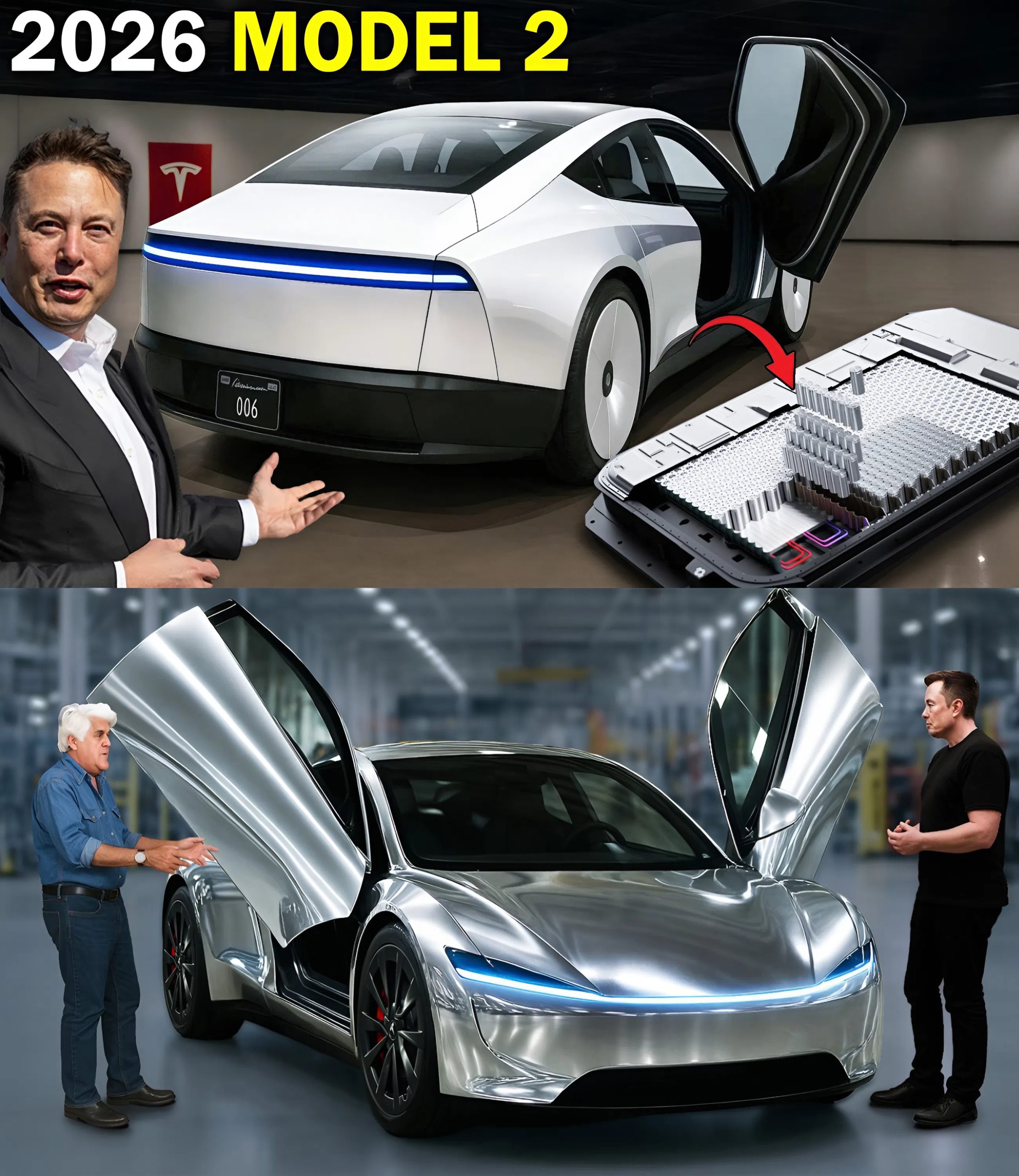After years of speculation, delays, and whispers from deep within Tesla’s global supply chain, it’s now official: , and it’s already producing the battery cells that will power Tesla’s long-awaited, game-changing Model 2 — a fully electric vehicle priced at just $24,990.
The sheer scale of this development is hard to overstate. This factory, located adjacent to Giga Texas, is built to supply batteries for 42 million EVs, most of them destined to be Tesla Model 2s. Musk isn’t just releasing a new car. He’s unleashing a revolution — and, perhaps, delivering the final blow to the internal combustion engine.
THE BATTERY THAT CHANGES EVERYTHING
At the heart of this disruption lies Tesla’s newest innovation: a domestically produced, ultra-efficient LFP battery cell — cheaper, safer, and longer-lasting than traditional NMC (Nickel Manganese Cobalt) chemistry. This is the culmination of over a decade of R&D and quiet acquisitions in battery technology, mining, and AI-assisted cell optimization.

Why LFP?
While LFP batteries have been used in China for years, Western automakers largely ignored them due to their lower energy density. But Tesla’s engineering breakthroughs — including advanced cell-to-pack integration, ultra-thin electrode coating, and a new modular thermal management system — have closed that gap significantly, allowing LFP cells to meet the performance demands of Tesla’s compact EVs.
Key benefits:
30% cheaper to produce
Non-toxic and cobalt-free
Extremely fire-resistant
Supports over 3,000 charge cycles — twice that of standard NMC cells
Ideal for warm-climate nations and robotaxi fleets
According to Tesla insiders, this new generation of LFP cells will cut battery costs by over 37%, making sub-$25,000 EVs not only possible — but profitable.
TESLA MODEL 2: THE PEOPLE’S EV
With batteries no longer the cost bottleneck, Tesla has officially greenlit the Model 2, a vehicle aimed squarely at the mass market — and poised to shatter the perception that EVs are toys for the wealthy.
What we know about the Model 2 so far:
Starting Price: $24,990
Range: 250+ miles per charge
Design: 5-door compact hatchback with futuristic minimalist interior
Autonomy: Hardware-ready for Full Self-Driving; integrated with Dojo AI neural net
Production Start: Q1 2026, with preproduction units expected late 2025
Manufacturing Hubs: Texas, Mexico, Berlin, and future sites in India and Indonesia
This car isn’t just for the U.S. or Europe. It’s built for scale across the Global South — in countries where $50,000 Teslas are unaffordable, but gas cars dominate due to a lack of alternatives. Model 2 changes that equation forever.

“We are not just building an electric car,” said Musk. “We are building the car that ends gasoline.”
42 MILLION VEHICLES? TESLA THINKS BIGGER THAN DETROIT EVER DARED
The LFP gigafactory’s ultimate goal is to supply batteries for 42 million vehicles, a number that would exceed Toyota Corolla’s all-time production record — the world’s best-selling car to date.
To do that, Tesla is not only building in Texas. Musk has quietly accelerated battery supply chains in India, South Korea, Indonesia, and Mexico. By 2027, the company expects to have four full-scale battery hubs operational — each with an annual output of 10+ million EV packs.
These facilities are powered by:
Tesla’s AI-managed Gigacasting systems
Dojo AI for real-time production optimization
A global network of solar-powered energy storage farms for internal energy supply
Recycled minerals sourced from Tesla’s Redwood Materials partnership
This is not a car company anymore. It’s an electrification empire.
THE RIPPLE EFFECT: A TECTONIC SHIFT ACROSS INDUSTRIES
The Tesla Model 2 — backed by the LFP battery breakthrough — threatens to upend every part of the automotive ecosystem:
1. Gasoline Cars Enter the “Collapse Curve”
At $24,990, the Model 2 undercuts nearly every gas-powered sedan on the market — even without government incentives. When you factor in zero fuel costs, minimal maintenance, and low charging expenses, combustion vehicles become financially irrational for the average buyer.
2. Chinese EV Giants Caught Off Guard
BYD and other Chinese brands had dominated the LFP space. But with this domestic Tesla factory, the U.S. reclaims control of a vital EV supply chain — eliminating China’s battery price advantage and undermining export-driven competition.
3. Legacy Automakers in Crisis
Ford, GM, and VW are far behind in LFP. Their focus on high-margin SUVs and luxury EVs now looks like a strategic misstep. With Tesla producing a $25K car that costs them $16K to build, the entire ICE-based value proposition collapses.
4. Energy Infrastructure Gets a Boost
Millions of low-cost EVs mean millions of new grid-tied batteries — giving Tesla Energy a secondary windfall as cars become decentralized energy nodes. Model 2 buyers will be able to power their homes during outages using V2G (vehicle-to-grid) tech.
CRITICISM & CONCERNS: IS ELON GOING TOO FAST, TOO FAR?
While fans hail the LFP battery gigafactory as a triumph of innovation, critics raise questions:

Workforce Automation: Tesla’s increasing reliance on robotics may limit job creation
Mineral Supply: Can ethical lithium, phosphate, and iron supplies scale fast enough?
Market Monopoly: Will Tesla’s vertical integration make it too powerful for regulators to rein in?
Autonomy Risks: With Dojo AI running both cars and factories, some fear a single point of control over transportation, energy, and AI.
Musk remains undeterred.
“We’re not moving fast to dominate,” he said. “We’re moving fast because Earth needs this now.”
FINAL THOUGHT: THE BEGINNING OF THE END — FOR OIL, GAS, AND THE STATUS QUO
What just happened in Austin wasn’t just the opening of a battery factory. It was a declaration of intent. Tesla isn’t waiting for policymakers, rivals, or economic headwinds. They’re building the future on their terms — and at unprecedented scale.
42 million electric vehicles. A $25K price point. Autonomous readiness. Global reach.
If this plan holds, the Model 2 could be for EVs what the Ford Model T was for automobiles — not just a product, but a redefinition of transportation itself.
And this time, it’s not just about getting people moving.
It’s about electrifying the planet.